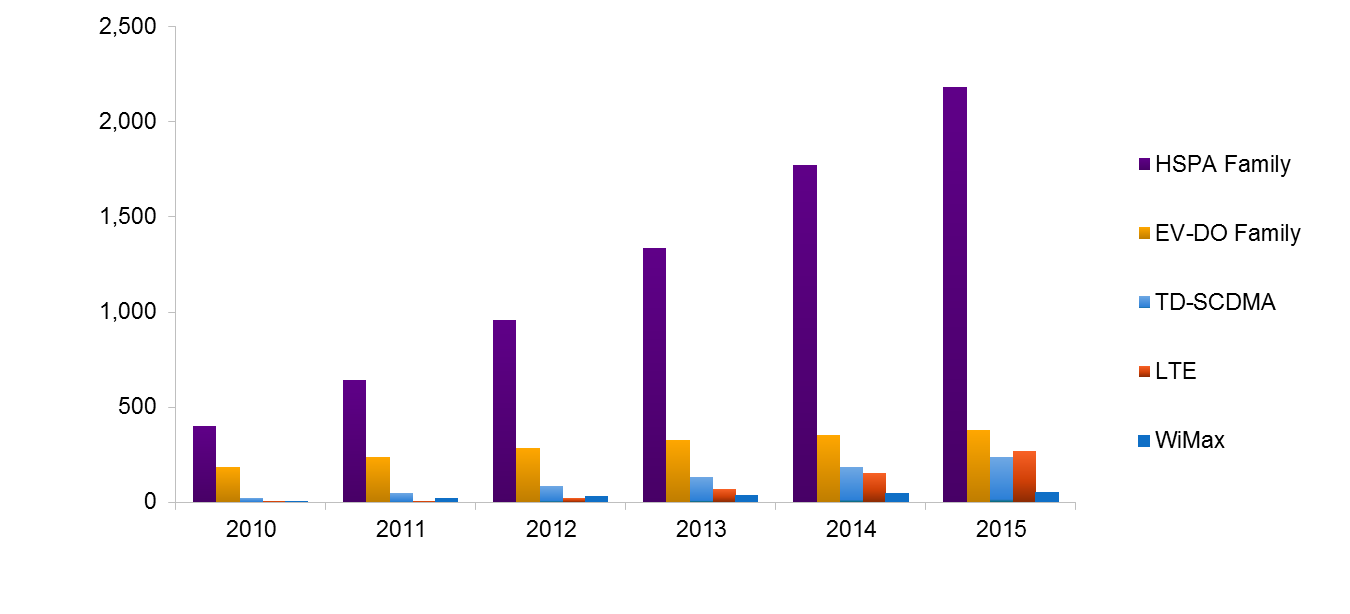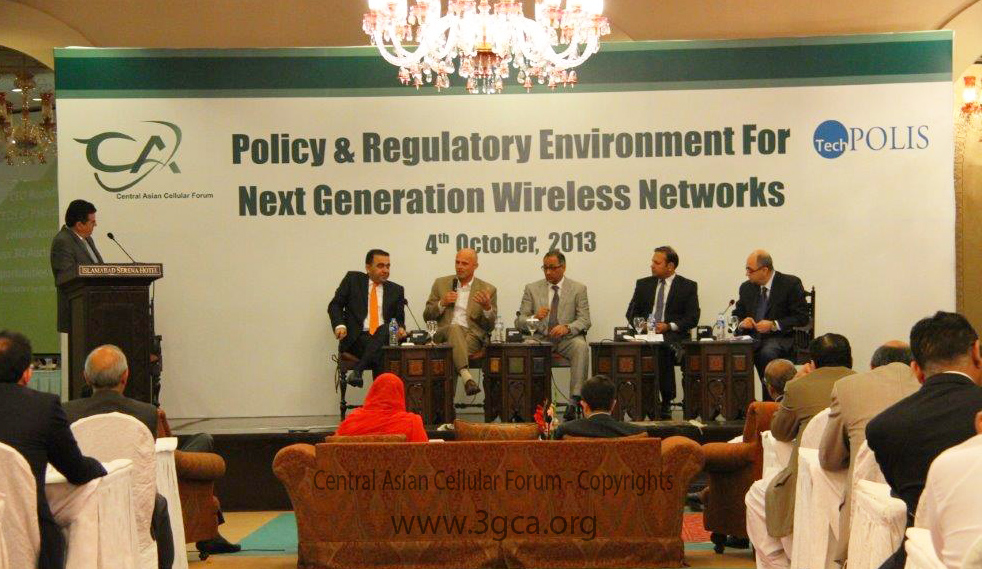Challenges & Way Forward for the Telecom Industry

Challenges & Way Forward for the Telecom Industry
While, the new government is confronted is by the challenges faced by the Energy Crises, Worsening Law & Order and Economy. The other priority area that needs immediate attention is the Telecom and IT Sector. The importance of this sector can be judged by the fact that the consecutive civilian and military governments after the 1988 elections relied on the developments made in this sector to promote its development and political agendas both very successfully. This sector alone will impact all other sectors and could be the much needed turn of the wheel for future prosperity keeping in view the dynamics attached to the industry. However, the last 5 years has been specially very difficult for the entire industry i.e. the consumers, mobile & fixed operators, distributers, retailers, vendors and software developers across board because of various steps or lack thereof by the previous government. Following are four important challenges and areas that the incoming government needs to take immediate action to not only control the damage but this could be turning point for making the economic wheel turn over and provide support for the more priority sectors such as power, law & order, education, health etc.
Appointment of Competent People at Key Positions
The importance of people at places where it matters the most is the key to success in all sectors but is most important in the IT & Telecom sector. All or any policy objective to be achieved largely depends on having competent people atleast in the keys positions such as Minister, Secretary, Members in IT & Telecom Ministry, Chairman & Members of PTA, MD PSEB, CEO USF, CEO ICT R&D Fund, Members of PTCL & Ufone Board, MD TiP where the government appoints people to manage the IT & Telecom Industry and its own assets.

The fiasco in the last many years in managing important organizations and issues such as network shutdowns, SIM Verifications, u-tube blockade, un-planned, irrational & sudden taxes etc., has all been due the lack of a professional team. Instead of bureaucrats (except for the secretary IT & Telecom) the government needs to hire or maybe even encourage/loan people from the industry who are competent and enjoy good reputation. Most importantly, they also need to make appointment of professional people preferably from the business community on the Board of Ufone, PTCL, USF, ICT R&D Funds and other such institutions that will ensure that these institutions could contribute to the betterment of consumers and economy rather than becoming another white elephant like steel mill, PIA, Railway etc., so that tax payers do not have to pay for their bail out packages in future. The future of all government long term approach will be seen and judged by the industry and investors of the team that is put to task specially in the initial first 100 days of the government.
3G Licensing & Spectrum Auction
Progression in telecom technologies has become an unavoidable phenomenon. Telecom markets are reshaping themselves into 3G and 4G networks. 3G UMTS licensing and spectrum auctioning has happened in all markets except three (Pakistan, Iraq and Algeria) including the developing economies. There are almost over 1.5 billion million 3G subscribers in 600 networks. This number is growing at an exponential pace as more and more subscriber embrace this technology because of the maturity and low cost of devices
However, Pakistan has unfortunately delayed the 3G licensing and spectrum auction now for over 8 years and is lagging behind in offering broadband and other consumer oriented applications such as health, education, commerce, entertainment over its mobile networks.
3G Spectrum auction is going to be the mother of all challenges for the new government rather it could be easily turned into an opportunity area without wasting further time. The early and likely benefits could be:
- An upfront auction fee on anywhere between USD 630m to 700m for available 3X10 Mhz slots. It is important to ensure transparent auction of the available spectrum and ensure that the mistakes of just getting a higher auction fee should not be the only objective as the development objective will get killed if the operators are forced to dole out higher auction fee.
- Further spectrum should be made available so as to accommodate the other 2 operators as well by working with FAB and those occupying the spectrum- An additional USD 450m-500 m can be generated. While, healthy competition is good but the Pakistan market is already over competitive for a new operator to be introduced at this stage-therefore focus should be to ensure that the spectrum is taken by the existing operators
- Not only thousands of direct jobs with vendors and operators will saved but our stagnant industry will be able to generate human resource that will have world competitive skills sets thus creating more employment opportunities in country as well as abroad.
- Provide a platform for existing IT industry to make applications for the growing Mobile industry and give the much need boost to the IT industry as the world has moved from e-world to the m-world.
Spectrum provided to the operators for 3G should be free of interference and sufficient for the operator to provide consumer oriented broadband wireless services. Irrational allocation of smaller chunks can seriously mitigate the benefits of new technology. In parallel work shall be started to make long term spectrum strategy and 700 Mhz/800 Mhz spectrum made available for future LTE deployments so that the 4G services can be introduced in 3 to 4 years when LTE devices are affordable to the consumers. 4G should not be confused as a leap frog jump into the future as this is being deliberately pitched to delay the 3G auction that is unavoidable rather a roadmap needs to be drawn for the future.
Revision and Convergence of IT & Telecom Policies
The Government of Pakistan in year 2000-01 announced the IT & Telecom Policy and after a couple of years announced two separate policies i.e. Mobile Cellular and Broadband policies. All these policies have since expired because policy documents are generally valid and viable for 5 year period.
The usefulness of these separate policies has been a question mark specially that the world has moved and therefore there is a need to update and more importantly converge all these policy documents into one. Likewise, the bigger question of having one regulatory body for all three sectors i.e. IT, Telecom and Media is the need of the hour since technologies have merged and it is difficult to bifurcate which is the voice, video or data bit therefore the business and operational boundaries are getting dimmer.
To avoid confusion therefore convergence phenomenon needs to be understood clearly from all domains and all policy institutions as well as regulatory functions need to be re-looked to maintain a balance approach for these challenges.
– The government should work towards and finalize a single policy for all Telecom, IT and Media related services. The policy should cover all aspects and easily implementable without raising any question marks from the stakeholders.
– Establish an industry wide group to have maximum inputs and collective wisdom in development and more importantly implementation of the policy. Plan to organize industry & country workshops & seminars to disseminate the policy understanding to as many as possible developing awareness where the stakeholders and general public can benefit from these policies.
– The government shall continue to have a liberal policy for private sector facilitation by way of lower or no licensing fee, low custom tariff on infrastructure and terminal devices in bringing newer technology for the benefit of the consumers and the industry as a whole.
Reviving the failing companies
In Pakistan the last two nation-wide mobile licenses including spectrum were auctioned at US $290 million each, which became a benchmark for all existing mobile licenses and their renewals. The WLL licenses auctioned in 2004 offered lesser spectrum and were auctioned on regional basis (14 total regions) at lower values. However, the “normalized cost” ($/MHz/pop) paid by the WLL operators was about the same as that of the mobile operators and for certain regions the WLL operators paid more than the mobile operators. Being the prime choice for providing basic telephony services to un-served rural area’s the WLL industry didn’t get much support from the Government rather was put at disadvantage by way of regulatory and technical restrictions on the services and technology used by the WLL operators.
Since, its inception based on the subscribers and the spectrum fee paid, the cost of regulatory fee has been more that the Mobile operators for the WLL operators on per subscriber basis and in some case such as in its first two years of operation it was almost double. The decreasing ARPU in Pakistan which is less that USD 2.5 and the fact that mobile operators have much more to offer in terms of mobility and variety of sets, the business case for a successful WLL does not exist. To add miseries to the WLL operators business case the WLL technology deployed was specifically singled out by taxing its user terminals a whopping 38% (in actual over 40% as all taxes are compounded) for its imports. Last but not the least the spectrum allocation specially the spectrum of 450 MHz that is deployed over most of rural areas by the operators was auctioned on per carrier basis thus restricting either to offer any data services or even allow operators to offer voice services to a larger population.
If appropriate remedial step on the policy and regulatory front are not taken the only surviving WLL operators PTCL, WorldCall and Telecard will eventually have to close their operations. The WLL operators and other such entities needs to be provided drastic policy and regulatory incentives for this industry to survive by providing them mobility, additional spectrum (some operators could be adjusted in adjacent band to make way for additional 3G spectrum availability) and lower taxation on their devices etc., otherwise its closure will not only impact the investments made already (largely loal investors) but will earn a bad name for the country.
PTA Taxes Portal
Find PTA Taxes on All Phones on a Single Page using the PhoneWorld PTA Taxes Portal
Explore NowFollow us on Google News!






